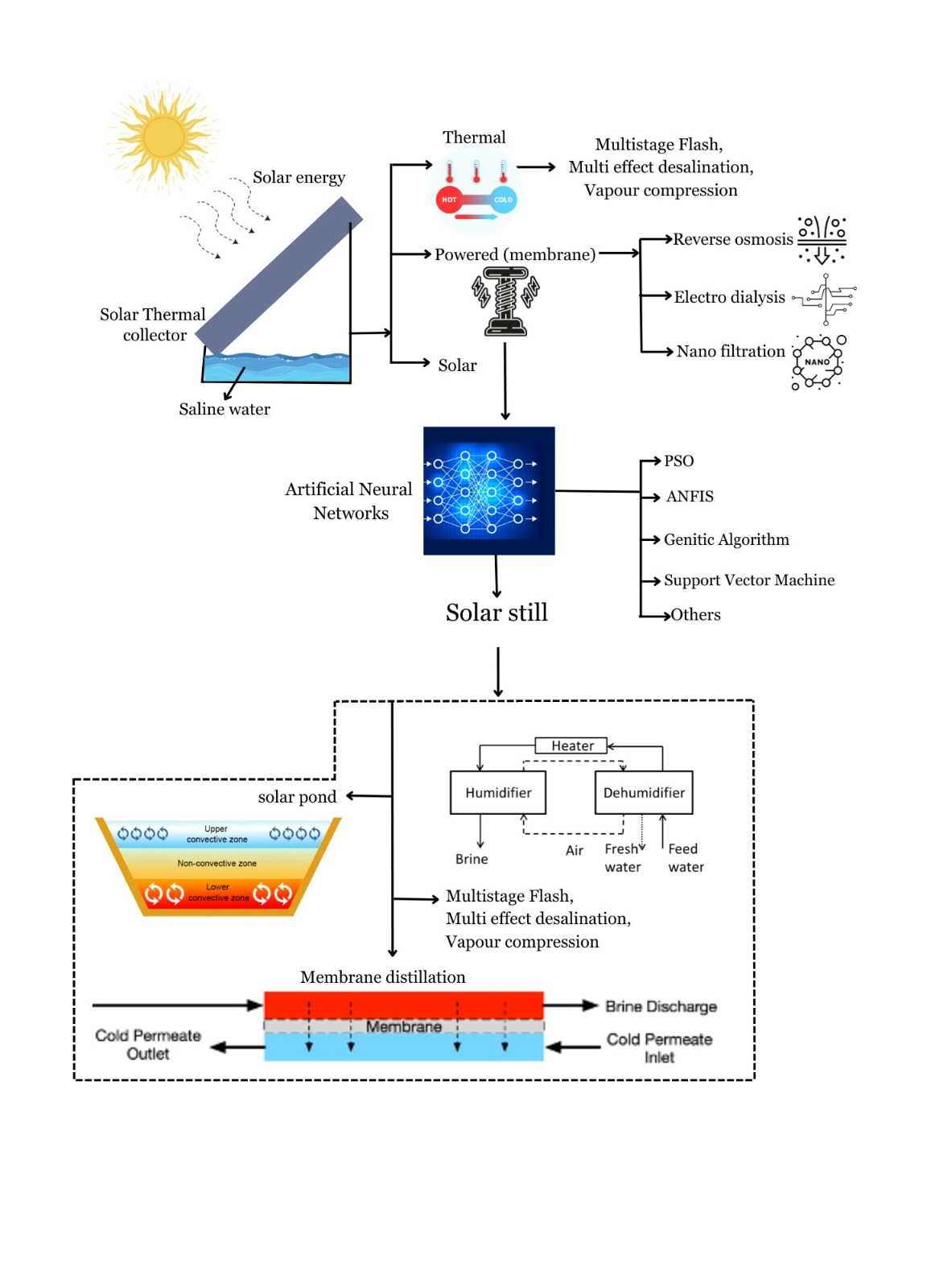
Due to the limitations of fossil fuels and the environmental problems associated with their usage, renewable energy sources have been exploited for desalination through the employment of various technologies and mediums. One of the most useful renewable energy sources for solar desalination, both directly and indirectly, is solar energy. The effectiveness of solar desalination is influenced by a variety of parameters, making it challenging to forecast their performance in particular circumstances. Artificial neural networks (ANNs), PSO, ANFIS, RO, and genetic algorithms would all be suitable techniques for their modeling and output predictions in this context. In the current research, multiple data-driven approaches are used in-depth to perform modeling of solar-based desalination facilities. By utilizing these methods with the proper inputs and structures, it can be deduced that the results of the solar desalination units can be consistently and correctly projected. Additionally, several suggestions are offered for future research in the relevant areas of the study.
Total file downloads: 14